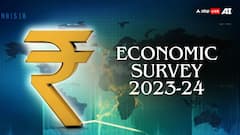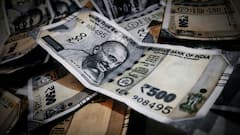(Source: ECI/ABP News/ABP Majha)
Asian Markets Bleed As Nikkei Falls Over 12 Per Cent. What Are The Experts Saying?
An underperforming US economy, a sharp rise in Japan’s interest rates, and rising geopolitical tensions primarily weighed heavily on investors’ sentiments

On Monday, several equity indices in Asia tanked after the Bank of Japan decided to raise key interest rates to 0.25 per cent. The benchmark indices of Taiwan and Korea also plunged more than 7 per cent in the session. The MSCI Asia Pacific Index tanked almost 4.3 per cent during the early market hours.
This bloodbath in the markets on Monday was attributed to several factors. An underperforming US economy, a sharp rise in Japan’s interest rates, and rising geopolitical tensions primarily weighed heavily on investors’ sentiments.
On Friday, the US reported an unemployment rate of 4.3 per cent, which came as a shock to the market. The nonfarm payrolls for the country increased by 114,000, marking one of the weakest seen since the COVID-19 pandemic. This was reflected in the tumble taken by Wall Street. The unexpected rise in the unemployment rate triggered fears of a recession in the economy.
Further, as trading progressed, Japan’s Nikkei index suffered a fall of more than 12 per cent. Domestically, the key equity benchmarks, Sensex and Nifty, also experienced major losses during the trading session. Both the benchmarks plunged close to 3 per cent in the afternoon market hours.
Also Read : India's Services Sector Sees Slower Growth In July, Check PMI Data Here
Gaurav Goel, SEBI Registered Investment Advisor, explained that this downfall seen in the markets today would prove especially dangerous for short-term equity investors, as it comes completely unexpected after a strong rally.
Goel further explained that the jobs report in the US led to recession predictions from analysts on beliefs that the US Fed remained behind the curve in slashing interest rates. “Secondly, the hawkish pivot by Bank of Japan has let to unwinding of the carry trades across the globe. Carry trades are essentially borrowing from low interest rate economies (like Japan) and investing in high interest rate economies (like India). The pivot leading to higher rates in Japan has led to a massive unwinding of these carry trades creating havoc across the board more particularly in Japan. Thirdly, tensions in Middle east have escalated and there are increased chances of Iran attacking Israel in retaliation to the killing of Hamas’s political leader Ismail Haniyeh,” he stated.
Sharing a technical analysis, CA Anuj Rakheja, SEBI Registered Research Analyst, noted, “On a technical front, the Japanese index is oversold, and may soon see a bounce, however, it remains in bear market territory as long as it stays below its declining 200 day moving average which is at 37,000 levels against the index levels of 30,700. As far as US markets go, the NASDAQ Composite index entered a short-term downtrend in the last week of July and has been falling since then, however, the long-term trend would remain up as long as it stays above its 200-day moving average which is around the area of 16,000.”
Top Headlines
Trending News







































